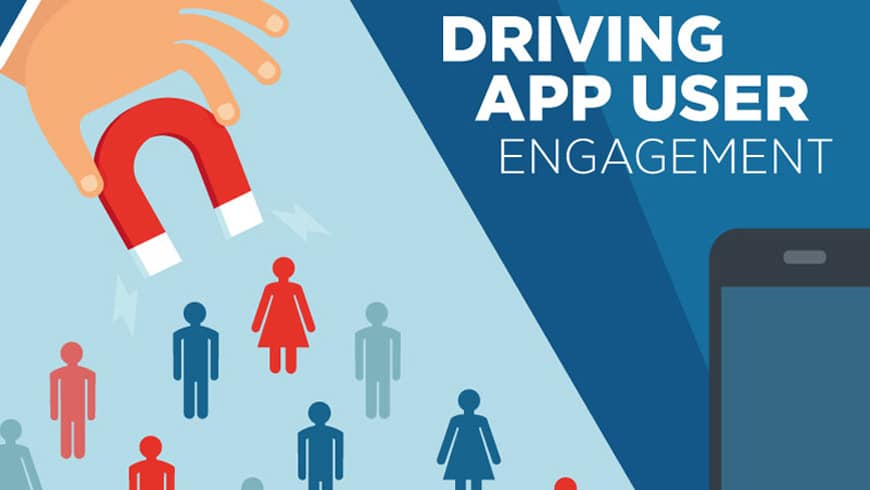Mobile engagement and user retention are two main indicators for the performance of every mobile business app. At the other hand, low app engagement and user retention lead to the app loss, and the opposite of its high retention results in the app’s performance.
It’s easy to assume that user acquisition is the central metric for assessing mobile app performance, but high download rates do not yield any business value without active users. Brands are investing huge amounts of money attracting users; but, it only starts here. The interest is in engaging and maintaining users after obtaining them.
App Engagement: App Engagement is a process to describe the number of active users on the application. It’s a measure of how much and how long people downloaded the app actually use it, and to what extent. It doesn’t matter what metrics and statics are used — like daily visits, purchases, etc.—all these allow the user to be involved after the initial launch of the app.
App Retention: App retention is a subjective term. It signifies the percentage of users of an app who are returning to the app within three months of their last app session.
Increasing engagement and retention will lead to more active and loyal app users.
Here are some methods for Increasing App Engagement & User Retention:-
1. Simple and Dynamic Onboarding:
You will increase the Mobile app engagement and user retention with an efficient onboarding process. Most apps don’t necessarily have a easy and complex onboard operation. The method of onboarding the device should be not only easy but also intuitive. The onboard phase further chances of users leaving the app are more complicated.
Here are some ways to simplify user onboarding:
- Reduce the number of steps needed to build an account or sign up and provide several ways to register (login with Facebook or Google, for example).
- Offer feature education to demonstrate the features of the app during the onboarding process but don’t overload users immediately.
- Teach through action to reveal the primary gestures in the app experience.
2. Make your app more personalized through Push Notifications:
Try to make interaction very easy as giving users a push notification or offering information on how to use the device. Apps with more success levels use this form of interaction to define the app’s consumer journey.
For example, it is useful to include all relevant information about the retailer offers based on geo location and usage trends while extending the application use session. Involving the users through engagement is a smart way to re-engage users of the dropout app.
3. Efficient use of In-App Messages:
In-app messages are those notifications that don’t require immediate action but are very important for the app users. It includes warning about the app issues, payment failure, or any recent app version updates. Keep in mind that not every message you send will be relevant to every single user. By segmenting your audience you get the chance to give the relevant information to the consumers.
4. Provide Offer and incentivization Programme to users:
You will make the app users more loyal and make them feel meaningful and important to a brand by providing incentivization programs.
Apps that use in-app purchasing as a monetization model, particularly QSR apps, can benefit from time-sensitive discounts, whereas free version apps may encourage users with usage-based rewards instead of monetary discounts
5. Encourage Two-Way Communication:
Consumers want to create brand relationships, more importantly they want to feel appreciated and valued. That is why it is equally important to open a line for two-way communication. How do you know what the users want if they don’t get their feedback? These messages help apps collect feedback, address customer problems and over time develop product functionality.
The added benefit of opening the lines of communication with consumers is being able to learn about issues faced by the users. This helps you to get to the bottom of the problem until it affects future downloads and develop a relationship with your users. It also helps to increase your engagement and retention rates, encourage positive reviews, and build long-term brand loyalty.
The above methods helps to improve your user engagement and retention to ensure that your application has an impact in the highly competitive app landscape. Download our Business Process Optimization strategy app that easily manages your workflow and boosts your business.

